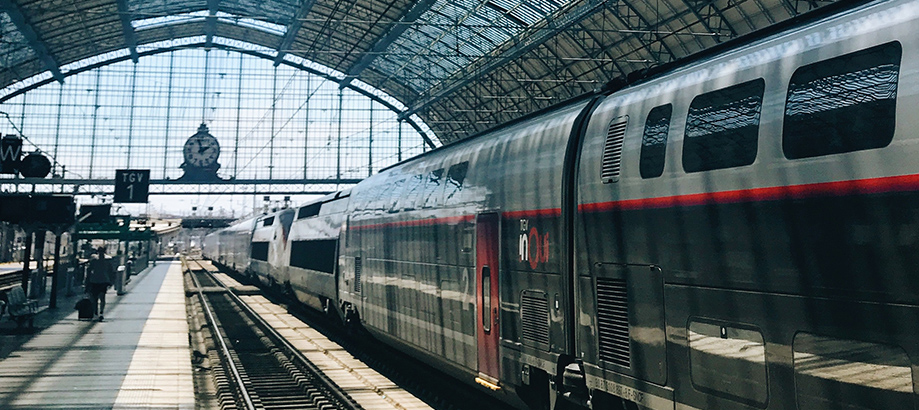KTH Railway Group – developing a competitive and sustainable railway system

SCI is the home school of KTH Railway group, a competence center that gathers several research groups in various rail-related areas. It is a unique organization, able to carry out major research programmes with a broad collaborative approach, covering not only technical aspects but also commercial ones. The centre has recently secured a substantial amount of funding from both the Swedish Transport Administration and the EU for its participation in the EU Rail flagship projects. Centre director Sebastian Stichel gave us insights into this achievement and its implications.
The KTH Railway Group gets approximately 60 MSEK to conduct research under the umbrella of the EU Rail flagship projects between 2024 and 2027, focusing on important development areas with clear societal benefits.
“The Railway Group is a KTH wide center. There are at least 10 research groups in four of KTH’s schools that are involved in activities in EU Rail. Examples of research topics are driverless trains, replacement of diesel traction with batteries or hydrogen, seamless freight transports throughout Europe, concepts for more attractive rail transport in rural areas and maglev trains.”, says Sebastian Stichel, director of the KTH Railway Group.
One of the project areas is autonomous train operation that aligns with the broader goal of making rail transportation more attractive and environmentally friendly.
“Autonomous train operation, can save personnel and energy. In passenger traffic, however, the train driver would in the beginning probably still be on the train as train attendant. With the knowledge of the position of all trains on the network and at which speed they are running, optimized driving strategies for each train can minimize energy consumption and increase the capacity of a line. Further, the space for the driver’s cabin can be used for passengers.”

Making train traffic more attractive in low-traffic areas – a challenging task
Since railway transport is an environmentally friendly transport mode, several European countries have the ambition to revive passenger traffic in low-traffic areas. The infrastructure is existing but is it is often used for freight transport or not at all.
“Railway transport has in the last decades been regarded to be too expensive on these lines. Therefore, future solutions must be more cost effective. The signaling systems intended for this type of traffic should in the future rely on radio-based communication with as little fixed installations as possible.”
In the long run, as mentioned above, the trains are also intended to run driverless. But still, there are no suitable vehicles for this type of traffic on the market today.
“New vehicle concepts need to be developed with a simpler layout. We are talking about updating the old “railbus” concept to today’s requirements. Two PhD students in the department of Engineering Mechanics will work on the active steering technology for the new train concept, respectively lighter materials like sandwich materials for the vehicle structure.”
“Another issue on these lines is typically that they are not electrified, that means they are operated by diesel trains. The main solutions for replacement are either batteries or hydrogen. Batteries still have the problem of limited running distance until recharging, while using hydrogen is a relatively inefficient technology so a lot of “green” electricity is needed.”
Measuring and implementation
The EU Rail flagship projects are aligned with the EU's Green Deal, aiming to reduce carbon dioxide emissions from the transportation sector. Being a part of this initiative the KTH Railway Group plans to quantify and measure the environmental impact of a train trip.
“We are developing tools that can calculate the energy usage of a train trip. With the knowledge of how the energy is produced, it is possible to estimate the emissions.”
Looking forward to the completion of the first projects in 2027, the group is already planning for the future.
“A second project phase will start when the first batch of projects is finished. This new phase envisages physical demonstrators in as many of the flagship projects as possible. The hope is that many of the research outcomes of EU Rail are ready for implementation when the program ends.”
Text: Elina Charatsidou, Marta Marko-Tisch
